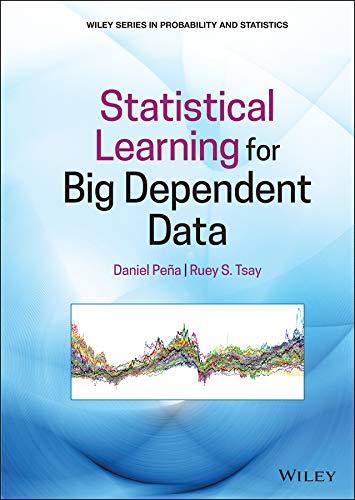Use the data in file gdpsimple6c8010 . txt of the GDP of six countries to fit a
Question:
Use the data in file gdpsimple6c8010 . txt of the GDP of six countries to fit a FM. Compare the results with those of Example 3.2 where a VAR model was fitted.
Example 3.2:
To illustrate the analysis of multivariate time series using VAR models, we consider the quarterly gross domestic product (GDP) by expenditures in constant prices of six countries from the first quarter of 1980 to the first quarter of 2018. The original data are available from the FRED, website of the Federal Reserve Bank of St. Louis. The countries considered are (i) United States (US), (ii) United Kingdom (UK), (iii) France (FR), (iv) Australia (AU), (v) Germany (GE), and (vi) Canada (CA). Let \(z_t=\left(z_{1 t}, \ldots, z_{6 t}\right)^{\prime}\) be the series of growth rates from the previous quarter, i.e. \(z_{i t}=100\left(Z_{i t}-Z_{i, t-1}\right) / Z_{i, t-1}\), where \(Z_{i t}\) is the GDP index with 2010 being 100 and seasonally adjusted. Figure 3.4 shows the time plots of \(z_t\) with the left panel consisting of US, UK, and FR (top to bottom) and the right panel consisting of AU, GE, and CA. From the plot, the drops in GDP caused by the 2008 financial crisis are clearly seen (the last quarter of 2008). The only exception is AU.
In what follows, we use the MTS package of \(\mathrm{R}\) to conduct the analysis. Details of the analysis are given in the attached \(\mathrm{R}\) output. To begin, we use information criteria to select the VAR order for \(z_t\). In this particular instance, the orders selected by AIC, BIC, and HQ are 13,1 , and 1 , respectively. For simplicity, we entertain a VAR(1) model. Using the least squares method, we obtain the fitted model
\(z_t=\left[\begin{array}{l}
0.32 \\
0.28 \\
0.13 \\
0.54 \\
0.12 \\
0.07 \end{array}\right]+\left[\begin{array}{rrrrrr}
0.16 & 0.44 & -0.18 & -0.02 & -0.02 & 0.17 \\
0.15 & 0.50 & -0.00 & -0.14 & -0.05 & 0.06 \\
0.08 & 0.16 & 0.43 & -0.02 & -0.05 & 0.04 \\
0.04 & 0.19 & -0.34 & 0.10 & 0.03 & 0.29 \\
0.21 & 0.08 & 0.64 & -0.16 & -0.13 & 0.03 \\
0.31 & 0.30 & -0.24 & 0.10 & 0.09 & 0.24 \end{array}\right] z_{t-1}+a_t, \tag{3.54}\)
where some of the estimates are not significant at the 5% level. The information criteria of the fitted model are −6.87, −6.16, and −6.59, respectively, for AIC, BIC, and HQ. Model checking indicates that the residuals of this fitted model do not have significant serial correlations. However, the model contains several insignificant parameter estimates. Following the suggested method of model simplification, we use thresholding to refine the fitted VAR(1) model. We start with a threshold 1 for the t-ratio and the resulting information criteria all decrease. See the R output for details. We increase the threshold to 1.3 and the associated model is
The information criteria of the refined model are −7.00, −6.57, and −6.83, respectively, for AIC, BIC, and HQ. The thresholding removes 16 insignificant parameters from the VAR(1) model. Figure 3.5 shows the p-values of the Ljung-Box statistics of the residuals of the model in Eq. (3.54). These p-values show that the model provides a reasonable fit. Figure 3.6 shows the time plots of the residuals of the VAR(1) model in Eq. (3.54).
Step by Step Answer:

Statistical Learning For Big Dependent Data
ISBN: 9781119417385
1st Edition
Authors: Daniel Peña, Ruey S. Tsay




